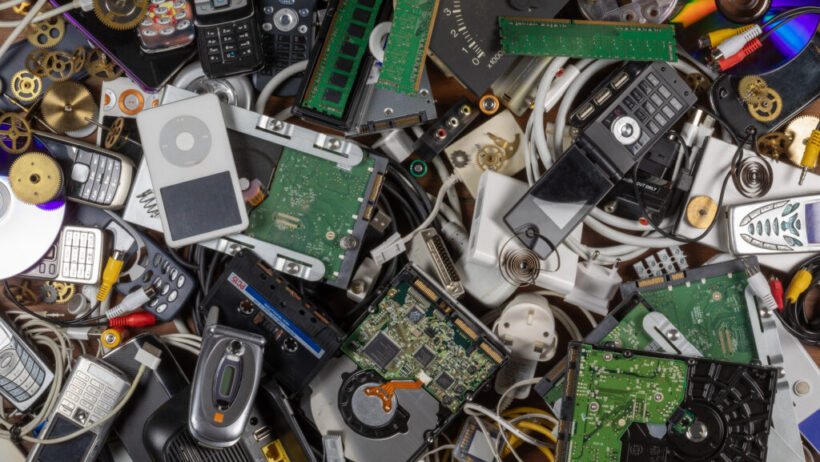The proliferation of technology has engendered a phenomenon that is both astonishing and alarming: e-waste. This term encompasses any discarded electronic devices, from smartphones and tablets to computers and televisions. As society continues to upgrade its gadgets in pursuit of the latest advancements, the consequences of this relentless cycle become increasingly dire. The discarded devices—your old phone included—harbor a hidden cost that extends beyond mere monetary value; they contribute significantly to global warming.
To grasp the magnitude of the situation, it is essential to comprehend what e-waste is and how it affects the environment. E-waste is not merely a collection of obsolete devices; it is laden with hazardous materials such as lead, mercury, and cadmium. When improperly disposed of, these toxic substances can leach into soil and waterways, posing severe health risks to humans and wildlife alike. Furthermore, the incineration of e-waste can generate harmful emissions, contributing to air pollution and exacerbating climate change.
The sheer volume of e-waste generated annually is staggering. According to the Global E-waste Monitor, an estimated 53.6 million metric tons of e-waste were discarded in 2019 alone, with projections suggesting this figure will reach 74 million metric tons by 2030. This increase is inextricably linked to our insatiable appetite for the latest technology. Every time a new smartphone is released, millions of perfectly functional devices are abandoned, contributing to a burgeoning environmental crisis. Each old phone, with its myriad components, serves as a microcosm of this larger issue.
One major factor contributing to the climate crisis is the energy expenditure associated with the production and transportation of electronic devices. The lifecycle of a smartphone, from raw material extraction to manufacturing, distribution, and eventual disposal, emits substantial greenhouse gases. Rare earth minerals essential for producing electronic components are often extracted through environmentally destructive mining practices. This not only devastates ecosystems but also fosters socio-economic injustices in regions where these resources are mined. Vulnerable communities frequently face displacement and health repercussions due to the pollution and depletion of local resources, exacerbating existing inequalities.
Moreover, the transportation of these devices across the globe generates additional carbon emissions. Considering that smartphones are often manufactured far from their point of sale, the cumulative carbon footprint for a single device can be quite significant. As global warming accelerates, addressing this impact becomes increasingly urgent. Yet, the narrative surrounding old phones often neglects these aspects, focusing instead on convenience and the allure of innovation, rather than the environmental repercussions.
There exists a pervasive misconception that simply donating or recycling old phones negates their environmental impact. While recycling does mitigate some damage, the reality is far more intricate. The recycling process itself consumes energy, and if the devices are not recycled properly, the materials can still escape into the environment, leading to further pollution. Only about 20% of e-waste is documented to be recycled effectively, with much of the rest ending up in landfills or incinerators, where it continues to pose challenges.
Recycling electronic waste safely requires advanced techniques and specialized facilities, which are still relatively rare. Comprehensive awareness programs focusing on the importance of responsible e-waste disposal must be developed. Communities must be informed about how and where to recycle their old devices and the intrinsic value embedded within these materials. Metals like gold, silver, and copper recovered from e-waste are not only economically valuable but are also critical in reducing the demand for virgin materials, thus conserving natural resources and reducing energy consumption.
In addition to recycling, consumers can adopt practices that reduce the overall demand for new devices. Prioritizing repair over replacement, opting for second-hand electronics, and supporting companies with sustainable practices mitigate the e-waste issue significantly. Repairable designs encourage longevity, which can ultimately lead to a meaningful decrease in the quantity of devices discarded on a yearly basis.
Governments and corporations play a pivotal role in addressing the e-waste crisis. Legislative measures can enforce stricter regulations surrounding e-waste disposal, demand higher recycling rates, and promote sustainable product designs. Moreover, businesses that prioritize the circular economy, where products are designed for durability, repairability, and recyclability, can significantly mitigate the ongoing e-waste situation.
In conclusion, your old phone, a seemingly innocuous item, has far-reaching implications for the warming planet. E-waste represents a crucial yet overlooked facet of climate change. The hazardous materials enclosed within electronic devices, coupled with their energy-intensive life cycles, pose severe risks to both the environment and human health. A comprehensive approach that includes responsible recycling, consumer education, and enhanced corporate accountability is paramount. As individuals and societies work together to address this pressing challenge, we can mitigate the hidden costs of e-waste, ultimately contributing to a more sustainable and equitable future.






